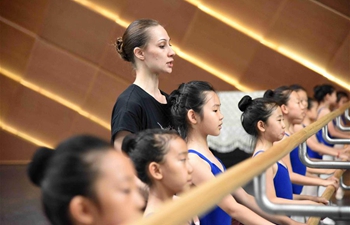PRAGUE, Aug. 7 (Xinhua) -- Czech-based scientists have invented a new technology to help patients suffering from cardiac arrhythmia, the Institute of Scientific Instruments at the Czech Academy of Sciences has announced in a press release.
The invention ensures the heart chambers are electrically activated and their mutual interaction are measured with millisecond-accuracy. This high-frequency ECG technology was developed by scientists of the institute together with colleagues from the Brno International Clinical Research Center (ICRC) and M&I Praha company. The team have already obtained a U.S. patent on their know-how.
Thanks to this technology, it becomes possible to significantly prolong the life of patients with certain irregular heartbeat problems by choosing a proper treatment. This may eventually help those who couldn't have a pacemaker inserted after a heart attack, for example.
The Czech invention uses high-frequency components in the ECG signal to distribute electrical activation in different parts of the heart chambers and specify the possible time delay. This data in milliseconds will provide doctors with valuable information on whether patient therapy is appropriate, said Pavel Jurak from the academy's department of medical signals.
According to scientists, the new technology will also improve the therapy of patients with pacemakers by adding more precision to its settings.
The new mechanism is a non-invasive procedure and very simple. "For effective diagnostics, it is enough to place a standard electrode, which is used in clinical practice, to measure a twelve-lead ECG. Diagnosis is cheap and easily available," said Pavel Leinveber from the team of scientists.
Scientists are now working to create a new diagnostic monitor. Jurak said the goal is to create a simple, interactive, experimental device to verify the methodology in clinical practice. It is due for completion in 2019. If successful, it will be certified and subsequently used in clinical practice.
















